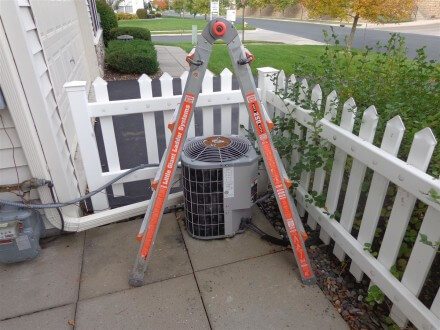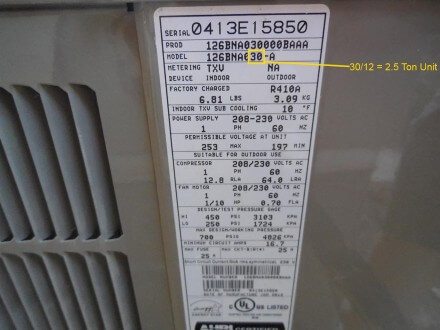I hear a lot of the same home inspection myths repeated over and over. I’ve blogged about most of these, but there are a few topics here that I haven’t blogged about yet.
10. The seller needs to fix this.
The seller doesn’t need to fix squat. Home buyers can ask sellers to fix things or pay for things to be fixed, but I can’t think of a single defect that a seller would be required to fix.
Many cities in Twin Cities metro area have Truth-In-Sale of Housing evaluations (TISHs) that might identify required repairs, but those are separate from the home inspection. Even if the home inspector identifies a defect that was missed by the TISH evaluator, the seller has no obligation to fix anything.
9. Windows less than 18″ from the ground need tempered glass.
There is no such code requirement. This misunderstanding comes from section R308.4 of the International Residential Code (IRC). The IRC requires special glass in hazardous locations, and goes on to give a list of hazardous locations. One such example is glass in a location that meets ALL of the following conditions:
- Exposed area of an individual pane larger than 9 square feet.
- Bottom edge less than 18 inches above the floor.
- Top edge more than 36 inches above the floor.
- One of more walking surfaces within 36 inches horizontally of the glazing.
When only one, two, or three of these conditions are met, it’s not considered a hazardous location and tempered glass is not required. My oldest code book is the 1988 UBC, which basically had the same requirement.
For more detailed information about safety glazing, check out Douglas Hansen’s article: Safety Glazing.
8. Buyers should only attend the end of the inspection.
Buyers will probably get the most out of the inspection if they do what the home inspector prefers. If the home inspector prefers to have the buyer show up at the end, the buyer would do best to show up at the end. If the home inspector prefers to have clients attend the whole thing (like we do), the buyer should try to be there the whole time.
7. New construction homes don’t need inspections.
We inspect a ton of new construction homes, and we find a ton of defects. Click here for some examples: new construction inspections.
6. CO alarms are required by law in Minnesota to sell a home.
Minnesota’s requirement for CO alarms has nothing to do with real estate.
5. A small air conditioner might not cool the house properly.
The physical size of that thing at the outside of the house won’t tell you anything about the cooling capacity. It has a lot more to do with the efficiency of the unit; larger units = more surface area = higher efficiency. The cooling capacity is measured in tons. To figure out how many tons your unit is, look at the model number and find a number usually between 18 and 60 that’s a multiple of 6. Divide that number by 12, and you have the number of tons your unit is.
For example, the unit pictured below is a 2-½ ton unit.
For more info on sizing air conditioners and a nice explanation of why air conditioners are rarely undersized, check out this article on Air Conditioner Capacity that was published in the ASHI Reporter.
There are several blog posts about AC sizing at the Vanguard Energy Blog. Here are a few:
- I Use an Air Conditioner Sizing Rule of Thumb!
- Why an Oversized Air Conditioner Is a Bad Idea
- How to Tell If You Have an Oversized Air Conditioner
- 5 Questions to Ask When Replacing Your Air Conditioner
- 3 Reasons Your 3 Ton Air Conditioners Isn’t Really 3 Tons
4. A backdrafting water heater should be replaced.
Replacing a water heater won’t correct backdrafting unless a new powervent water heater is installed. If a water heater backdrafts, there’s a problem outside the water heater. Sometimes it’s a problem with the vent, sometimes the vent connector, and sometimes it’s a more complicated problem that requires evaluation of the entire house.
For more detailed information on this topic, click this link: backdrafting water heaters.
3. Old stucco is a concern.
Old stucco is fine. It’s just the newer stuff from the early 90’s on that should be a concern. What went wrong with this stucco? Joseph Lstiburek calls it the “perfect stucco storm.” We recommend invasive moisture testing when buying a newer stucco home.
2. Bedrooms need closets.
There is nothing in the building code that requires a closet. An appraiser might want to see a closet… so what’s a closet?
1. Double tapped circuit breakers are a big deal.
This is one of the most common electrical defects that home inspectors report on, but the repair for a double tapped circuit breaker is usually quick and easy. When compared to most of the other electrical defects that home inspectors find, the safety risk posed by a double tapped circuit breaker is quite low. So what’s the big deal? Probably fear of the unknown.
This is one of the topics I’ll be covering in an upcoming continuing ed seminar for real estate agents on October 23rd. It’s free and breakfast is included. Click here for more info: https://cecreditbreakfast.eventbrite.com/
*1988 UBC
Author: Reuben Saltzman, Structure Tech Home Inspections



Paul Harar
October 15, 2013, 7:16 am
Thank your for your wonderful ideas and suggestions! You obviously have years of experience in this field and know the issues!!!
And have a lot of common sense.
Andrew Constantine
November 12, 2013, 6:47 am
Wow! You have seen quite a bit in your career! Keep posting. As a home inspector and former home builder, I can say that your more experienced than most. Keep up the good work.
Thanks!
David Johnson
December 7, 2013, 12:43 pm
As a home inspector myself, it is always interesting to see what other inspectors have to Say. I would say I agree with everything you have said. The biggest one I see in my territory in the misconception that new homes don’t need a home inspection.
All good info, keep it up!